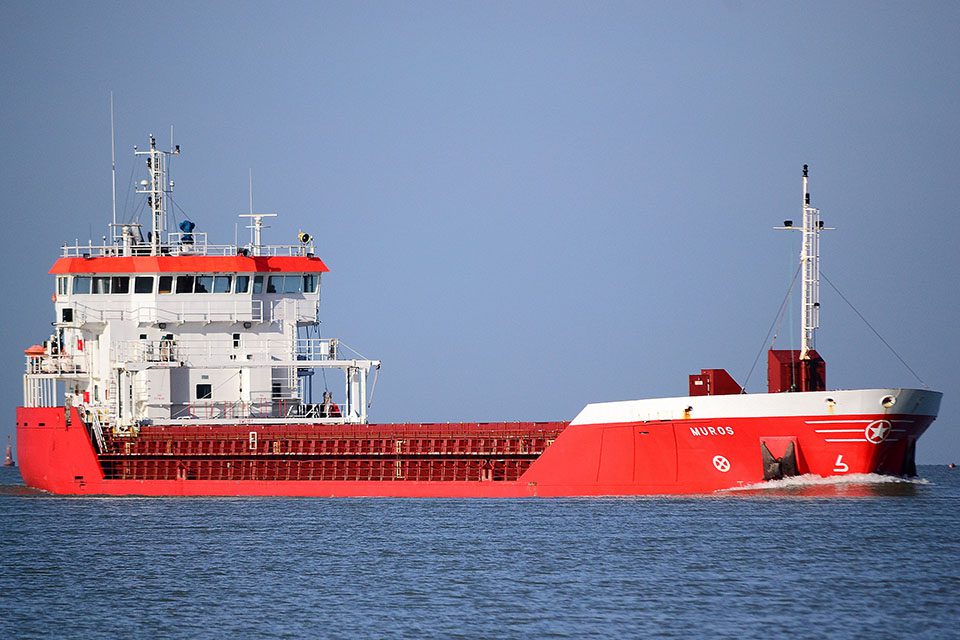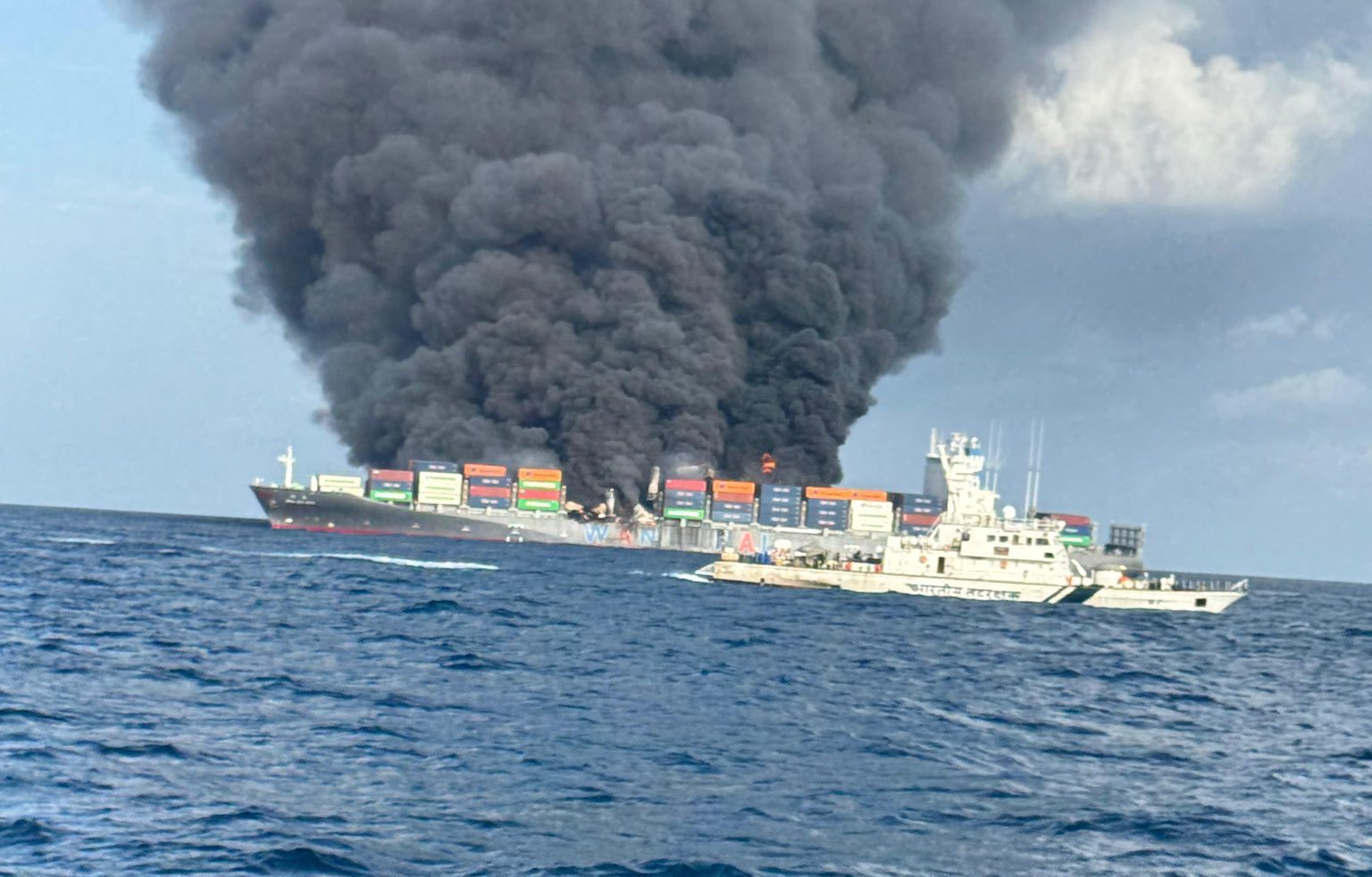MV Muros. Photo credit: UK MAIB
The UK Marine Accident Investigation Branch says that ECDIS safeguards were either “overlooked, disabled or ignored” in the grounding of a bulk carrier off the east coast of England last December.
The bulk carrier Muros ran aground on December 3, 2016, on Haisborough Sand, a charted sandbank about 8 miles off England’s Norfolk coast. The vessel was re-floated 6 days later and was towed to Rotterdam for repair.
In its investigation into the grounding, the UK MAIB found that the master’s attempts to maneuver the vessel clear of the sandbank were unsuccessful due to a falling tide. When Muros grounded, the vessel was following a passage plan shown on its electronic chart and display information system (ECDIS). The plan had recently been revised on the ECDIS by the OOW who then used the system to monitor the vessel’s position.
But according to safety issues identified in the report, the revised passage plan over Haisborough Sand was unsafe and a check of the revised route was not conducted on the ECDIS at an appropriate scale. The report said that the master directed the OOW to revise the route but he did not see or approve it, adding that the OOW’s performance was probably adversely affected by a low state of alertness.
“The route over Haisborough Sand was planned and monitored using the vessel’s ECDIS. However, system and procedural safeguards intended to prevent grounding were either overlooked, disabled or ignored,” the report stated.
The MAIB also found that ECDIS use onboard Muros was not as envisaged by regulators or equipment manufacturers
The MAIB did not make any recommendations but said it has started a safety study to characterize and understand the way ECDIS is currently being used on board ships.

 Join The Club
Join The Club











